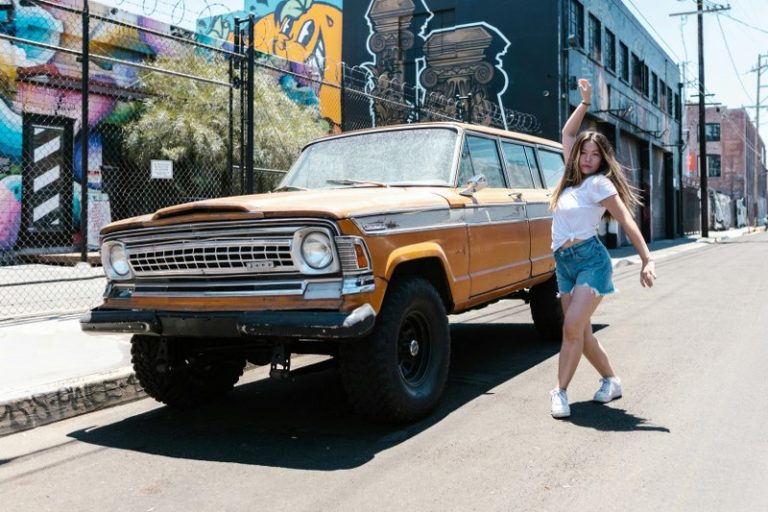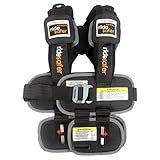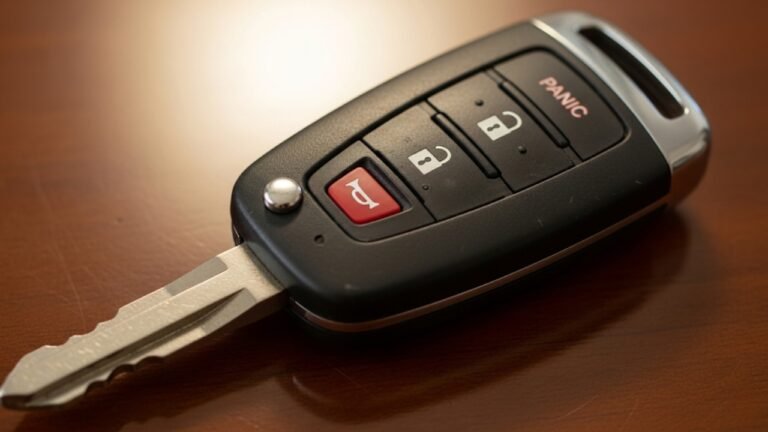Where Is Porsche Made: Unveiling the Powerhouse Behind the Iconic Brand
Have you ever looked at a Porsche and felt that strange mix of calm and excitement at the same time? It is like hearing a soft whisper from a master artist while also feeling the heartbeat of a powerful machine. Many car lovers know that Porsche stands for speed, style, and a deep sense of pride, but very few truly know the story behind its birthplace. When someone asks Where is Porsche Made, the answer sounds simple at first, yet the truth holds layers of history, passion, and craftsmanship. Porsche is made in Germany, but it is not just “made.” It is shaped, sculpted, and perfected in a place where engineering is almost a national soul.
Germany treats cars the way some cultures treat music or storytelling. There is respect. There is tradition. There is love for doing things with care. Porsche was born in this environment, and that is why every model feels alive, almost like it carries the spirit of the people who built it. In this guide, we explore the factories, the people, the mindset, and the legacy that make Germany the true powerhouse behind Porsche. You will see how a brand becomes a legend, how a place shapes a machine, and why Porsche continues to shine in a world full of fast cars. So sit back, relax, and imagine we’re sitting in a quiet café talking about something close to heart: the magic behind Porsche’s home.
The German Roots That Shaped a Legend
Germany is known for precision. You see it in their trains that run on time, their machines that last for decades, and their culture that values honest work. This same spirit flows into every Porsche. When we ask Where is Porsche Made, the answer connects not only to a physical place but also to a mindset. Porsche was born in Stuttgart, a city full of rolling hills, old factories, and people who understand engines the way artists understand colors. The company grew here, learned here, and built its reputation brick by brick.
Stuttgart is not just a location on a map. It is the cradle of Germany’s car history. Some of the world’s biggest car names started here. This environment shaped Porsche’s identity from day one. The early engineers did not simply build cars. They built dreams with steel. They believed that performance should feel smooth, like a calm river that suddenly gathers speed. This belief shaped the famous Porsche drive feel. Even today, when an owner drives a 911 or a Panamera, they experience the same philosophy that started decades ago in Stuttgart.
To understand why Stuttgart matters, imagine a painter who grew up surrounded by sunsets. Their art carries that influence forever. The same happens with Porsche. It carries German precision and pride in every curve. And that is why the birthplace of Porsche remains more than history. It is the heart that still beats inside every model.
Stuttgart-Zuffenhausen: The Soul of Porsche
If Stuttgart is the birthplace, then Zuffenhausen is the soul. This neighborhood is where the early Porsche team opened their first workshop. When you walk through the streets today, you can still feel that legacy in the air. It is like standing near a river where great stories once flowed. This is where the first Porsche 356 came alive. It was small, light, and full of character. People instantly fell in love with it. The success of this model proved that Porsche was here to stay.
When people ask Where is Porsche Made, the story always circles back to Zuffenhausen. This is where most Porsche sports cars are still built by hand. The idea of hand-building may sound old, but Porsche keeps it alive because some things lose their soul when machines take over completely. Skilled workers, many of whom have been with Porsche for decades, assemble pieces with a level of care that feels almost personal. They check every detail again and again until it matches Porsche standards.
Here are some things that make Zuffenhausen special:
-
It is home to the 911, Porsche’s crown jewel.
-
It is the oldest Porsche production site.
-
It uses a blend of modern robots and traditional craftsmanship.
-
Workers train for years before they touch core components.
Every Porsche built here passes through a process that mixes old wisdom with new tech. That balance has kept the brand ahead of trends. While other companies chase change, Porsche evolves with purpose. And that is why the Zuffenhausen plant feels like a bridge between past and future.
Early Milestones That Built the Porsche Identity
A brand becomes iconic not overnight but through moments that shape its future. When understanding Where is Porsche Made, we also learn about the milestones that defined its journey. Each step in Porsche’s growth took place in Germany, making the country not just a manufacturing hub but a witness to history.
One major milestone was the creation of the Porsche 911. When it launched, it was more than a car. It became a symbol of clean design and raw performance. People recognized it instantly because of its round headlights and smooth body shape. The 911 was made in Zuffenhausen, and it still is today. It has evolved through many generations, but its soul has remained untouched.
Another milestone was the launch of the Cayenne. This SUV changed everything. Some people doubted Porsche at the time. They thought an SUV did not match the brand’s identity. But Germany trusted its engineers. And once customers drove it, they understood why Porsche made it. It was fast, strong, and smooth—the same Porsche feel packed into a larger body. The Cayenne helped Porsche grow into new markets and brought new energy into German production lines.
The Panamera was another key moment. This luxury sedan proved that Porsche could mix comfort with performance without losing its character. These milestones highlighted Germany’s role as a creator of world-class machines. They showed that the country does not fear innovation. Instead, it embraces new ideas while protecting its heritage.
Inside Porsche’s Modern Production Hubs
When people think of Where is Porsche Made, they often imagine one big factory. But Porsche has multiple production hubs, each with its own mission. The main ones remain in Germany because the brand believes in keeping its roots strong. This decision helps maintain quality and ensures every car follows Porsche’s standards.
Main Production Sites in Germany
Zuffenhausen
-
Builds the 911, 718 Cayman, and 718 Boxster
-
Focuses on sports cars
-
Combines manual craftsmanship with robotics
Leipzig
-
Builds the Macan, Cayenne, and Panamera
-
Known for advanced automation
-
Uses eco-friendly production methods
Weissach
-
Home to research and development
-
Tests new technologies
-
Designs future Porsche models
Each location works like a different organ in a body. Zuffenhausen is the heart. Weissach is the brain. Leipzig is the muscle. Together, they keep Porsche strong, fast, and evolving.
Below is a simple table showing the main production hubs and their roles:
| Porsche Factory | Key Models | Specialty |
|---|---|---|
| Zuffenhausen | 911, 718 models | Hand-built sports cars |
| Leipzig | Macan, Cayenne, Panamera | High-tech mass production |
| Weissach | Concept models | Design and innovation |
These hubs work together to create cars that carry Porsche’s signature feel, regardless of the model or segment.
Crafting a Porsche: Where Precision Meets Passion
When asking Where is Porsche Made, it’s not just about the factory walls or assembly lines. It’s about the people, the care, and the obsession with perfection. Every Porsche begins its life as an idea on paper, but transforming that idea into a tangible machine requires unmatched precision and dedication. Germany’s engineers, technicians, and artisans play an essential role in ensuring that each vehicle is flawless. This is why a Porsche is more than just a car; it is a symphony of engineering and artistry.
Every component of a Porsche is carefully selected, tested, and assembled. From the hand-stitched interiors to the perfectly balanced chassis, every detail reflects a culture of excellence. Workers undergo extensive training, often for years, before handling core parts of the car. Imagine someone painting a masterpiece; a single mistake could ruin the entire piece. Porsche treats car building with the same mindset. Even with advanced robotics and AI-assisted assembly, human skill remains at the heart of production. This delicate balance of human touch and modern technology ensures that each Porsche retains its soul while benefiting from the latest innovations.
Moreover, German craftsmanship is legendary because it doesn’t compromise on standards. Whether it’s a 911 Turbo speeding along the autobahn or a Panamera cruising through city streets, every Porsche carries a consistent performance and quality that stems from its birthplace. This devotion to excellence is why Porsche cars feel alive, responsive, and timeless.
Innovation and Technology in German Production
Germany is synonymous with precision engineering, and Porsche fully embodies this reputation. The question Where is Porsche Made naturally leads to discussions about cutting-edge technology. Porsche invests heavily in research and development, particularly at its Weissach development center. Here, engineers experiment with new materials, electrification, and aerodynamics. Innovations from Weissach eventually make their way to production facilities in Zuffenhausen and Leipzig, ensuring that every Porsche remains at the forefront of automotive performance.
Electric vehicles, like the Porsche Taycan, highlight Germany’s role in shaping the future. Taycan production in Zuffenhausen involves unique processes tailored for electric drivetrains, high-voltage batteries, and sustainable assembly practices. Porsche doesn’t just add technology; it integrates it seamlessly, making electric performance feel as exhilarating as a combustion engine. Germany’s focus on precision, testing, and continuous improvement ensures that the Taycan—and other electric models—meets the brand’s legendary driving standards.
In addition, Porsche continuously explores innovations like lightweight materials, adaptive suspension systems, and advanced infotainment. These innovations aren’t scattered randomly; they are carefully designed in Germany, tested rigorously, and integrated into each vehicle with meticulous care. This technological edge, combined with traditional craftsmanship, makes Germany more than a production location—it is the birthplace of modern automotive ingenuity.
Sustainability: Building a Greener Porsche in Germany
Porsche understands that making extraordinary cars comes with responsibility. Germany’s factories have become examples of sustainable production, balancing high-performance manufacturing with environmental care. From renewable energy use to waste reduction, Porsche incorporates eco-conscious methods in every step of production. Leipzig, for instance, is powered largely by renewable sources, while innovative recycling programs ensure minimal material waste. Even the paint shops are designed to reduce emissions without compromising finish quality.
Sustainability in Porsche manufacturing goes beyond energy. The company is exploring circular economy strategies, such as recycling components and reducing CO2 emissions across the supply chain. Germany’s strict environmental regulations, combined with Porsche’s proactive approach, create a model where luxury, speed, and sustainability coexist. This commitment ensures that when someone asks Where is Porsche Made, the answer reflects not only excellence in engineering but also responsibility toward the planet.
Global Presence: Expanding the German Legacy
Although Germany remains the core of Porsche production, the brand has expanded globally. Facilities like Osnabrück, Germany, focus on engine assembly, while Finland contributes specialized engineering components. Even with international collaboration, Germany’s influence remains central. Every global facility follows German standards, meaning a Porsche built anywhere is a German-engineered vehicle in spirit and quality.
This global footprint allows Porsche to meet growing demand without sacrificing its heritage. By standardizing processes across borders, the company ensures that whether a car is assembled in Leipzig, Zuffenhausen, or another certified site, it carries the same precision, performance, and character that German engineering promises. Germany is not just where Porsche is made—it is the template for excellence wherever Porsche cars travel.
The Emotional Connection of German-Made Porsche Cars
A Porsche is more than metal and machinery; it is an emotional experience. Every time someone slides into the driver’s seat, they are touching decades of German craftsmanship and engineering culture. The way the steering responds, the sound of the engine, and the smoothness of acceleration all tell a story. That story begins in Germany, where attention to detail, love for driving, and technical mastery converge.
Owning a Porsche isn’t just about status; it is about connecting with a legacy. Many owners speak of their first Porsche as life-changing, and it’s no coincidence that these feelings are linked to German precision. When you drive a Porsche, you are engaging with centuries of automotive expertise distilled into one machine.
FAQs About Where Porsche Is Made
1. Where is Porsche primarily manufactured?
Porsche is primarily manufactured in Germany, with its main production hubs in Zuffenhausen, Stuttgart, and Leipzig.
2. Are all Porsche models made in Germany?
Most Porsche models are built in Germany, but some components, such as engines and electronics, may come from specialized international facilities that adhere to German engineering standards.
3. What is special about the Zuffenhausen plant?
Zuffenhausen is the birthplace of the Porsche 911 and continues to focus on sports car production. It combines advanced robotics with hand craftsmanship.
4. Does Porsche use sustainable production methods?
Yes, Porsche integrates renewable energy, waste reduction, and recycling programs in its German production facilities to reduce environmental impact.
5. Where is the Porsche Taycan produced?
The Taycan is produced in Zuffenhausen, Germany, using specialized processes designed for electric vehicle technology.
6. Is German-made Porsche more reliable than others?
German-made Porsche cars are considered highly reliable due to meticulous craftsmanship, rigorous quality control, and engineering excellence.
7. Does Porsche have global production facilities?
Yes, Porsche has facilities in other countries like Finland and collaborative sites for specific components, but the main assembly and design roots remain in Germany.
8. Why is Germany so important to Porsche?
Germany is crucial because it provides skilled labor, a culture of precision, and a heritage of automotive innovation that defines Porsche’s identity.
Conclusion
So, where is Porsche made? The answer is simple yet profound: Germany. From the bustling streets of Stuttgart-Zuffenhausen to the innovative hubs in Leipzig and Weissach, Germany is the heart, brain, and soul of Porsche. Every vehicle reflects decades of craftsmanship, innovation, and passion. From the first sketches to the final test drive, Porsche cars carry a piece of German pride in every detail. Whether it’s a high-performance sports car, a luxurious Panamera, or an eco-conscious Taycan, the brand’s roots in Germany ensure that every drive is more than transportation—it is an experience, a legacy, and a promise of excellence.
Owning a Porsche means connecting with this legacy, feeling the precision in your hands, and appreciating the dedication behind each vehicle. When people ask Where is Porsche Made, they are asking more than a question about location—they are asking about history, quality, and emotion. And Germany delivers all of that, every single time.






